Information of Annapurna Conservation Area Project
Annapurna Conservation Area project (ACAP) is largest conservation area of Nepal and located in north center in Nepal. It has 7629 square Km and established in 2049 B.S. (1992 A.D.). It is bounded by the mustang in the north, Kali Gandaki River in the west, Marsyandi valley in the east and Pokhara valley is the south border.
This project was initiated by National Trust for Nature Conservation (the king Mahendra Trust for Nature Conservation) a non- government organization and donate by many international trusts. Nowadays, this project conserved by National Trust for Nature Conservation (NTNC) and local people community from local area. The head quarter of this ACAP is Ghandruk.
How to get Annapurna Base Camp ?
If you are wondering to get Annapurna Base Camp from Kathmandu, here is little information to reach out the ABC. Pokhara is one of the best and popular touristic cities in Nepal. There is easily accessible from Kathmandu by air or land. It is west part and 200 km far from Kathmandu. Pokhara is gate way to the Annapurna Base Camp Trek and it takes approximately 6-7 days to reach there. Even though Trekking Itineraries are always flexible because there are many starting and ending place, so it may take a little more or less than that. Normally, you will take a private vehicle along the Pokhara-Baglung road for one and half hours at Nayapul. From there, you will trek to Ghandruk, which is biggest Gurung Village in the region and spend the first night of the trek. After that, next few days you will head to Annapurna Base Camp through Ghorepani, Tadapani, Chomrong, Dovan, Deurali and Machapuchre Base Camp. Annapurna base camp is wonderful place to see great panoramic mountains views.
Annapurna Base Camp Trek Permit Cost
The Annapurna Conservation Area Project (ACAP) entrance fee and the Trekkers Information Management System (TIMS) card are both essential permits for embarking on your trek within the Annapurna Region. These mandatory permits apply to all treks in the region except for the Nar Phu Valley Trek and Upper Mustang Trek. To secure these permits, you have the option of obtaining them through a registered trekking company.
Throughout your entire journey, you must keep these permits in your control and present them at each checkpoint along the Annapurna Base Camp Trek. Neglecting to do so could result in the need to purchase these permits on-site, incurring a double charge as a penalty. Alternatively, you may even be required to retrace your steps without the proper permits. Ensuring you have these permits from the outset will not only streamline your trekking experience but also support responsible trekking practices and contribute to the preservation of the surprising Annapurna Region."
TIMS (Trekkers Information Management System) Cost: US$ 20 per person/ per Trek
Annapurna Conservation Area Project (ACAP) Cost: US$ 30 only per person/ per trek
Our government has instilling these two permits for Annapurna Base Camp Short Trek from Kathmandu and Pokhara.
Accommodation During the Annapurna Base Camp Short Trek
Accommodation along the Annapurna Base Camp Trek is mainly provided by teahouses or guesthouses. These are basic lodges that offer rooms with varying levels of comfort, from simple dormitory-style rooms to private rooms with attached bathrooms in some places. Every different place has different quality of the lodges and might become more basic as you gain altitude so, you can choose the best according to your budget.
Rooms: Rooms typically have twin beds with clean bedding and blankets. In some places, you might find rooms with attached bathrooms, but shared bathrooms are more common. We highly recommend to trekkers that you should bring a sleeping bag for warmth and comfort especially at higher altitude. During peak trekking seasons, it's advisable to book your accommodation in advance or your trekking guide help to book accommodation in advance.
Dining Hall: Teahouses often have common dining halls and cozy common rooms where you can have food, relax, socialize, and enjoy the warmth of a stove or fireplace in some place.
Toilet and Bathroom: Many teahouses offer Western-style flush toilets and shared bathrooms with running water in lower altitude but they have squat toilets instead of Western-style flush toilets in a higher altitude. Toilet paper might not always be provided, so it's necessary to bring your own supply. Hot showers are available in these areas for an extra fee, but the availability of hot water will be limited. It's necessary to maintain good hygiene during short Annapurna Base Camp Trek, so you must to bring essentials items like hand sanitizer, wet wipes, and tissues.
Meals and Drinks During the Annapurna Base Camp Short Trek:-
Every teahouses and lodges has a menu with nearly identical food items along the trek offer a variety of food options, including both local Nepali and international dishes. The cooks are essentially skilled, yet the meal may have a taste that differs from that of western cuisine. Because meat is scarce and not fresh in the mountains, we advise you to try vegetarian recipes.
Meals:
Dal Bhat: A traditional Nepali meal consisting of rice and lentil soup, often served with vegetables, pickles, and Papad. This meal is plenty, allowing you to have a generous serving. Once you've enjoyed this hearty dish, you might not choose other foods. We always recommend this dish for all trekkers during the Annapurna Base Camp Trek.
Momos: Steamed or fried dumplings filled with Potatoes, Cheese, Tuna, mixed vegetables etc.
Noodles and Pasta: Different types of noodle and pasta dishes, often with same as Momos like vegetables, cheese, Tuna, Eggs and sometimes meat in few places.
Soups: They offer various types of soups, including noodle soup, vegetable soup, and more like potatoes soup, onion soup, and garlic soup etc.
Bread and Pancakes: They also offer items like chapati (flatbread), Tibetan bread, and pancakes, breads etc.
Others dishes: They have many different dishes in the food menu like Burger, Pizza, potatoes items, bakery items, fried items and many others.
Drinks:-
During the Short Annapurna Base Camp Trek, you'll find a variety of drink options available at the teahouses lodges and teashops along the trail. Here are some common drink choices you can expect during Short Annapurna Base Camp Trek:
Hot Drinks:
Tea: There are many different types of hot tea such as black tea, green tea, herbal tea, spiced tea (Nepali tea), Ginger tea, milk Tea are readily available. These hot teas provide warmth and comfort, especially in the colder altitudes.
Coffee: Must of the lodges offers the coffee items but Instant coffee is normally available at teahouses during the Short Annapurna Base Camp Trek. While the quality might vary like milk and black, it's a warm and energizing option.
Hot Chocolate: it is a delightful treat for those seeking a sweet and warm beverage.
Ginger Lemon Honey Tea: This is a popular drink for its potential health benefits and soothing properties during the high altitude trekking.
Bottled Water: Bottled water is ban for purchase on way to Annapurna Base Camp. It's necessary to stay hydrated, especially at higher altitudes, to prevent altitude sickness. It’s a good idea to use a refillable water bottle and use water purification methods when refilling from local sources.
Our team will provide guidance on the proper usage of water purification methods, ensuring your hydration needs are met responsibly and economically during the journey.
Cold Drinks:-
Soft Drinks: Must of the teahouses offer canned or bottled soft drinks like cola, Pepsi, soda, and fruit juices. Availability will be limited at higher altitudes due to the logistics of transportation.
Alcoholic Beverages: All teahouses offer a limited selection of alcoholic beverages like beer, rum vodka and local beverages like Chyang (rice beer) and Raksi (rice wine). You should keep in mind that alcohol can dehydrate you and might have a more marked effect at higher altitudes.
Best Time to Annapurna Base Camp Short Trek
The best time to visit the Annapurna Base Camp Short trek is during the two main trekking seasons namely spring and autumn season. These two seasons offer the most favorable weather and spectacular views, making your trekking experience enjoyable and memorable. We can do a short Everest Base Camp Trek throughout the year but the weather is quickly changeable during the summer and winter season, which makes it terrible and difficulties to get to the target on time due to landslides and snow falls.
Spring season (March to May):-
Spring is one of the best times for the Annapurna Base Camp Short Trek. During this season, the weather is generally stable, with mild temperatures during the day and clear skies, providing excellent visibility of the surrounding mountains including Annapurna south (7200 m), Annapurna I (8091 m), Annapurna III (7545 m), Gangapurna (7450 m), Glacier Dom (7425 m), Machhapuchhre (6890 m) and more. Trekking trail is decorated with vibrant rhododendron blooms, creating a colorful and picturesque landscape. The temperatures are pleasant, making it a comfortable time for hiking and the days are longer, allowing for more exploration. So spring is the best and recommended time for trekking and climbing in Nepal.
Autumn season (September to November):-
Autumn is another popular and recommended season for the Annapurna Base Camp Short Trek. The weather will be dry, and the skies are generally clear, offering breathtaking views of the Himalayan peaks. The temperatures are moderate, and the conditions are favorable for hiking. Autumn is also known as the post-monsoon season, so the air is crisp and clean after the rains, providing stunning vistas of the surrounding mountains and landscapes. You might have the opportunity to witness local festivals like Dashain and Tihar, which add a cultural touch to your trekking experience. While autumn is popular and can attract a higher number of trekkers, the atmosphere is generally lively and energetic.
Summer and winter season (July to August and November to February):-
Annapurna Base Camp Short Trek is possible during the summer and winter seasons but can be more challenging compared to the preferred trekking seasons of spring and autumn. Summer is not the most recommended time due to the challenging weather conditions and potential risks involved. Winter season can be suitable for experienced trekkers but you have to prepare for the cold conditions and have the appropriate gear and equipment.
However, the weather and trail conditions may not be as favorable and you may encounter more challenges, such as rain and snow during the winter months (December to February) and the possibility of monsoon rains and leeches during the summer months (June to August). This is not good time for trekking in Annapurna Region of Nepal.
Difficulties during Annapurna Base Camp Short Trek
Trekking to Annapurna Base Camp (ABC) in Nepal is a popular adventure that offers breathtaking mountain views and a chance to immerse you in the local culture. However, like any trek in a remote and challenging environment, there can be difficulties along the way. Here are some potential difficulties you might encounter during the Annapurna Base Camp short trek:
No acclimatization day: It's important to note that the Annapurna Base Camp (ABC) trek can be completed in various durations, but this shorter itinerary has not included a designated acclimatization day. Acclimatization is very important when trekking at higher altitudes to allow your body to adjust to the reduced oxygen levels. Walking slowly and drink plenty of water is benefits of the acclimatization and hydration for the Short Annapurna base camp trek.
Altitude Sickness: This is one of the most significant challenges on the short ABC trek. As you ascend to higher altitudes, the air becomes thinner and contains less oxygen. This can lead to symptoms like headache, nausea, dizziness, and even more severe forms of altitude sickness. Walking slowly and drink plenty of water is avoid the altitude sickness in the Himalayas.
Weather: The weather in the Himalayas is changeable, especially during certain seasons. Snowfall, rain, and extreme cold will make the trek more challenging. It's important to be prepared with appropriate clothing and gear for different weather conditions.
Physical Fitness: The trek to Short Annapurna Base Camp involves steep ascents and descents, narrow path, and long hours of walking. It requires a reasonable level of physical fitness with strong determination.
Accommodation: The accommodations along the trek can be very basic, and limits, especially in the higher altitudes. During peak trekking seasons, these teahouses can fill up quickly, so securing a spot by advance book.
Communication and Connectivity: The internet service and mobile network coverage can be non-existent due to its remote.
Trail Conditions: The trail condition is depending on the time of year and recent weather events. Rain can make the trails slippery and dangerous, while snow and ice can add an extra layer of challenge.
Cultural Considerations: While the local people are generally friendly and welcoming, it's important to be respectful of their culture and traditions. This includes things like dress code, photography protocol, and general behavior.
Despite these potential challenges, many trekkers successfully complete the Annapurna Base Camp trek with experienced Nepali guide and got the experience incredibly satisfying. Proper preparation, physical fitness, and a positive mindset can help you overcome these difficulties and fully enjoy the beauty of the Himalayas.
Safety protocal for Annapurna Base Camp Short Trek
Ensuring your safety during the short Annapurna Base Camp (ABC) trek is important. While the trek is normally considered safe, it's important to be well-prepared, make informed decisions, and follow some basic safety guidelines.
Trekking with a Guide or Group: If you're not an experienced trekker, it's advisable to trek with a knowledgeable guide or as part of a group. They can provide guidance, route location, and assistance in any case of emergencies.
Physical Preparation: Prepare yourself physically before the trek. Regular exercise, cardio workouts, and hiking can help improve your fitness and stamina.
Weather Awareness: Be prepared for changing weather conditions. Dress in layers to adapt to temperature changes and carry waterproof clothing in case of rain.
Proper Equipment: Wear suitable footwear, comfortable clothing, and carry necessary gear such as a good-quality backpack, sunglasses, sunscreen, a hat, and a headlamp.
Hydration and Nutrition: Drink plenty of water to stay hydrated, especially at higher altitudes. Eat nutritious meals to maintain energy levels throughout the trek.
Emergency Contact: Inform someone you trust about your trekking plans, including your itinerary and expected return date. This can be a friend, family member, or your accommodation staff.
First Aid Kit: Carry a basic first aid kit with essentials like bandages, antiseptic, pain relievers, blister treatment, and any personal medications.
Altitude Sickness Medication: If advised by a medical professional, carry altitude sickness medication and know how to use it.
Follow Trail Markers: Stick to marked trails to avoid getting lost. The trail can be well-defined, but weather conditions might obscure markers in some areas.
Communication: Carry a charged mobile phone for emergencies. However, note that signal reception might be limited in some areas.
Stay Informed: Stay updated about the trail conditions, weather forecasts, and any potential hazards before and during your trek.
Trust Your Instincts: If you feel uncomfortable or unsafe for any reason, don't hesitate to turn back or seek assistance.
That safety is a shared responsibility between you, your fellow trekkers, and the local communities. Being well-prepared and making responsible choices will greatly enhance your trekking experience while keeping you safe on the Annapurna Base Camp
Communication in the Annapurna Region
Annapurna region is popular trekking destination In Nepal. There are good mobile network services and internet services in the whole Annapurna region trekking area but not few places such as Nar Phu Valley, Tilicho Lake and Saribung Pass trekking. The internet service will be available whole Region but tea-houses and lodges provide internet with some extra charge. If you have not Nepali SIM card for communication with your family and not use the internet service, our guide help to you for pass the massage because always our guide have cellular phone and he contact to Kathmandu trekking office about to know the trek and your health condition as well as we help any kinds of problem during the trek.
Hence, travelling is important things in life so we make sure you about safe and healthy during the trekking in Nepal. Nowadays, you can get the local SIM card in Kathmandu airport after arrival to use the 3g and 4g internet service because most of the trekking routes in Nepal have Mobile Network service. If you need Nepali SIM, we can provide to you for your trekking but you have to tell us before leave the trekking.
Acclimatization:
High altitude sickness is common problem in the high Himalayan area when you go as higher elevation. It is appears very quickly but symptoms are preventable. If you have previous high altitude trekking experience, it might be best but if not trek in above three thousand meters high you need to prevention of the high altitude sickness. You need a extra suitable acclimatization days to complete the trip and Walk slowly, drink plenty of water, don’t drink alcohol, go higher and sleep low elevation as well as spend 2 nights on every 500 meters above than 3500 meters heights are prevent the altitude sickness during the trekking in Nepal. All our trekking itineraries are flexible with acclimatization days and first priority for your health and safety to complete the trek without any problem. We provide you basic medicine to support for emergency rescue, if situation gets worse.
Hence, every day you have inform to your Guide or Leader about your health condition and he will response to decide whether and your overall health condition to continue the trip or return back.
Tipping information
The Guide, porter, driver and all workers who are working in tourism filed, they except some tips during your Tour Trekking and others activities in Nepal. Tipping is judgment of workers from travelers and workers offers the tips end of the trek. Travelers tips 10% of their payable amount but you can give to them depend on their services.
Hence, it is important to High Pass Adventure working team who take care to you all the time during the visiting in Nepal, motivated with outstanding service and offer inspiring trip in a lifetime experience.
Trip extension
If you have extra time after complete the trek, you can do different activities or different short trek in Nepal. We have many short tour packages and adventure activities such as Chitwan National park and Bardiya National Park for Jungle safari tours. You can visit Pokhara city, Nagarkot Hiking, Dhampus hiking or day Rafting tripin Trisuli River.
Adventure activities are like paragliding, canoeing, Ultra light flight, Bungee Jump and Mountain Biking. These all package are extra activities as optional tours and not included in your package cost. If you will do these activities after the trip with us, we arrange at a reasonable cost and we give to you good discount.
Trekking Gear List
Travel equipment are necessary to pack before you travel. We hope it is too much to carry from your home to others country but some are the necessary equipment can be hired or buy in Kathmandu around Thamel. These general equipment are for all seasons while on trekking in Nepal, but may be different as per the different season and duration of trekking routes on your chosen trip.
Documents:
- Passport and 4 passport size photos
- Travel insurance details (in case an emergency evacuation if needed)
- Boarding passes for flights
- Driver’s license (if needed)
- Cash USD
- Credit/Debit Card (Ensure you have $500 on your card in case an emergency helicopter evacuation is needed)
Sleeping:
- Sleeping bag (Comfort rating -15 Celsius recommended)
- Sleeping bag liner (Optional)
Footwear:
- Trekking boots: one pair lightweight
- Sandals for city and tea house footwear
- Shoes for the plane and tea houses (Optional)
- Gaiters for hiking in winter to the base camp
- Thin, lightweight inner socks
- Thick, warm wool hiking socks
Clothing for Body:
Please make sure that you have non-cotton clothing for trekking:
- Base-layer t-shirts (e.g. running t-shirts)
- Fleece/Windproof jacket
- Waterproof jacket
- Down jacket for warmth
- Travel clothes and City Wear
- Underwear
- Base-layer trousers (optional)
- Waterproof trousers
- Trekking trousers
- Trekking shorts (Optional)
- Gloves and wool hat
- bandanna or scarf
Health Requirements (Basic First Aid Kit)
- First-aid kit; should contain lip salve, Aspirin, Band Aids, anti-histamine, Imodium or similar tablets for mild cases of diarrhea
- Re-hydration powder, extra prescription drugs you may be taking if any particular
- Wet wipes for cleaning can be purchased in Kathmandu
Others:
- Sunglasses and Sun cream
- Towel
- Book (reading and writing materials)
- MP-3 /Music, headphones and ear plug (who know some people on group are snoring) as optional.
- Travel wash
- Hand sanitizer, wet wipes
- A day bag: 35 liters
- A duffel or rucksack with straps to go over your back (Max 12 kg of weight for porters to carry)
- Dry Liner or Dry Bag
- Water bottle/thermos/ camel bag: At least 2 L. Nalgen bottles best.
General Toiletries
- Toilet papers/ tissue
- Contact lenses, Glasses (if needed)
- 1 medium sized quick drying towel
- Tooth brush/paste (preferably biodegradable)
- Multipurpose soaps (preferably biodegradable)
- Nail clippers
- Face and body moisturizer
- Feminine hygiene products
- Small mirror
- On Personal Hygiene
- Wet wipes (baby wipes)
- Anti-bacterial hands wash
Others (optional)
- Trekking Poles
- Large plastic bags – for keeping items dry inside your kit / duffel bag
- Travel game i.e. chess, backgammon, and scrabble. (for luxuries)
- Binoculars (for luxuries)
- Trail Map/Guide book (if you are alone)


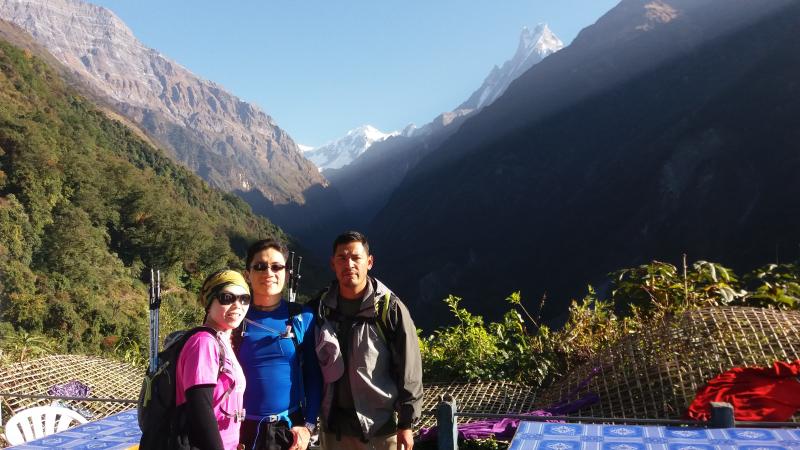

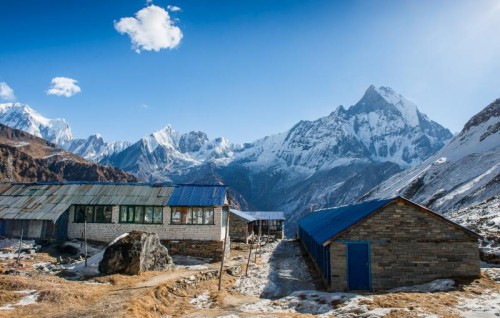


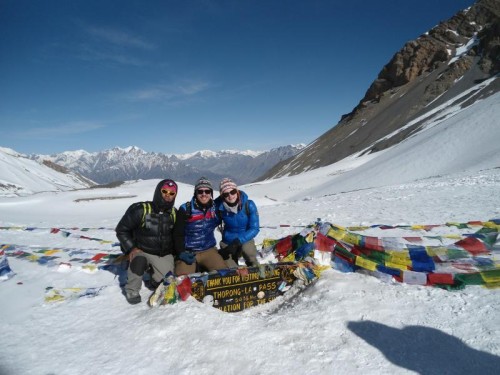
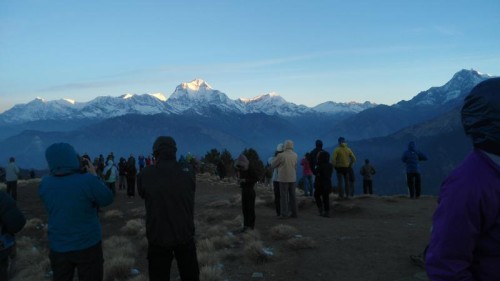
 USD 400
USD 400.jpg)
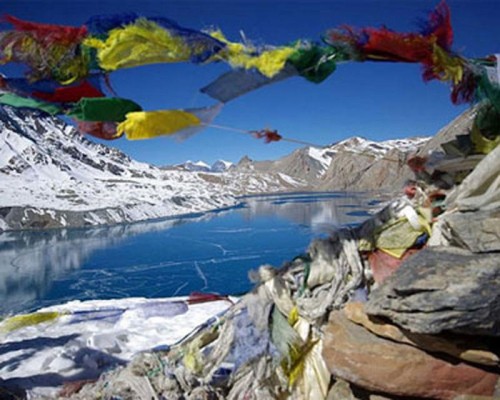
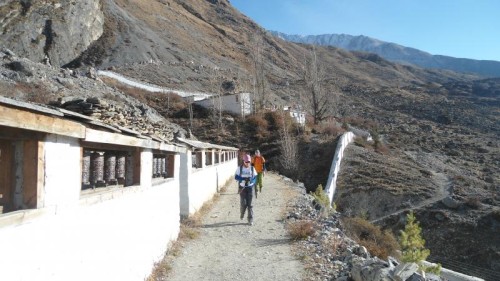

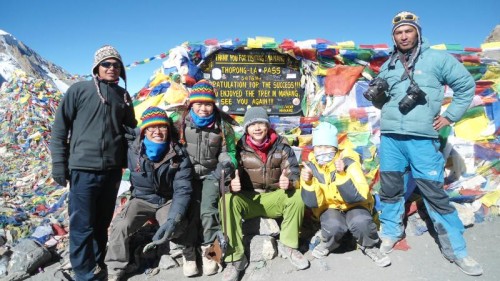
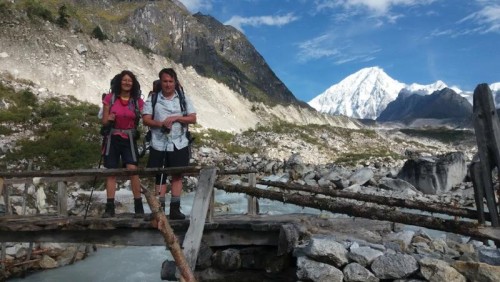
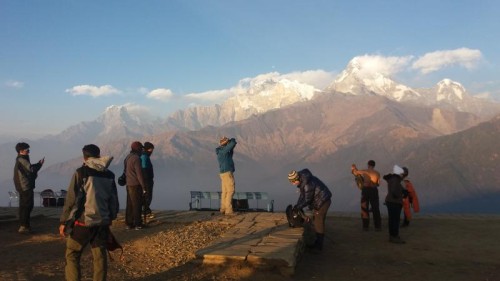
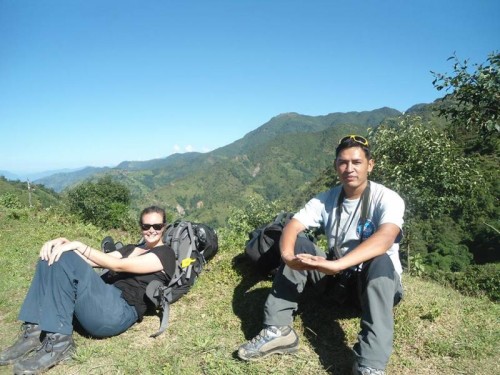
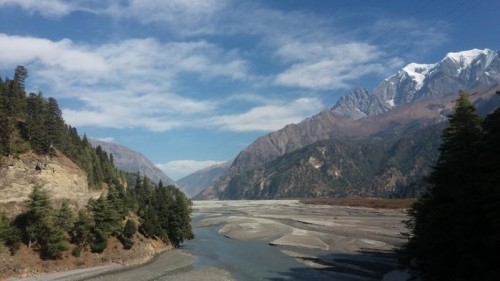
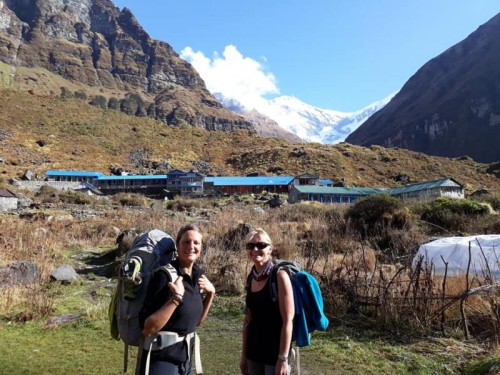
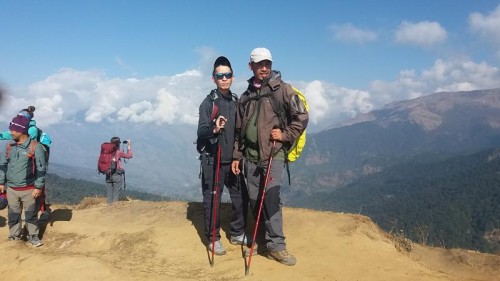
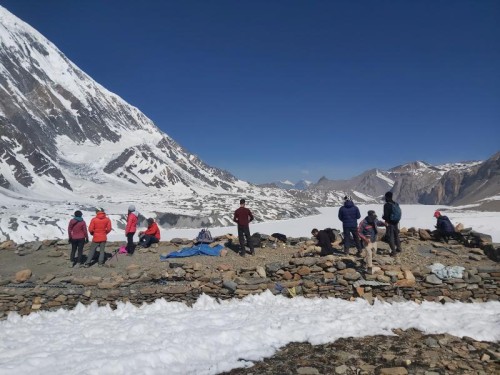

Shrisha Acharya
India
1st Solo Trek to Annapurna Base Camp 7 days
18th June, 2023
This was my 1st solo trek in Nepal and I couldn't have chosen a better company and guide for my trek to Annapurna base camp. My experience right from when i arrived in Nepal till I left was simply amazing. Mr. Purna Karki and Mr. Ganesh looked after me with utmost care which made my trek memorable and fun filled. I shared my flight details and accordingly they arranged my itinerary for the Annapurna Base Camp trek. Special thanks to Mr. Purna who was my trek guide as he ensured that I don't face any major exertion or I don't have
Lee Sook P
Malaysia
Adventure in Life Time With High Pass Adventure
18th June, 2023
My wonderful trekking across the Himalayas with High Pass Adventure. The service was exceptional from everyone. Our porter and guide both always had a smile and were constantly checking to make sure we were ok. The choice of tea houses was also excellent with Annapurna sanctuary Lodge in Annapurna Base Camp is our favorite. High Pass Adventures made sure everything ran to schedule gave excellent advice and helped make this a trip of a lifetime. I would not hesitate recommend to them.
Pho Ow Ee
Malaysia
Adventure in Life Time With High Pass Adventure
18th June, 2023
My wonderful trekking across the Himalayas with High Pass Adventure. The service was exceptional from everyone. Our porter and guide both always had a smile and were constantly checking to make sure we were ok. The choice of tea houses was also excellent with Annapurna sanctuary Lodge in Annapurna Base Camp is our favorite. High Pass Adventures made sure everything ran to schedule gave excellent advice and helped make this a trip of a lifetime. I would not hesitate recommend to them.
Malaysian
Kerstin, Christoph and Elisabeth
Austria
Absolutely amazing trek to Annapurna Base Camp
16th July, 2023
We were really happy that we booked our trek with this High Pass Adventure Trekking company and we enjoyed every second with Sundar and Changba. We always felt welcome and they were very patient during the Trek to Annapurna Base Camp.
We can absolutely recommend this company and in case we will come back, we are going to book again with this company and guys!
Julius
France
Great experience with a super friendly and experienced guide!!
16th July, 2023
Looking back at our 7 day Annapurna Base Camp Trek, we can say that we are more than happy that we made the decision to book the guided ABC trek with High Pass Adventure Trekking company. Our guide was very friendly and forthcoming throughout the whole trip, always checked in on our wellbeing and provided background information on the scenery that we were walking through. If you are looking for an affordable trip to experience Annapurna in all its beauty, while receiving personal guidance, I can highly recommend booking a trek with High Pass Adventure!